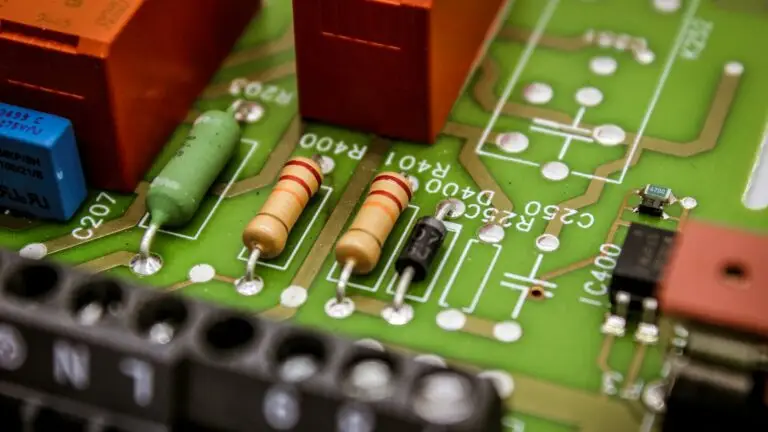Introduction
In today’s rapidly evolving technology landscape, keeping systems up-to-date is important, especially for businesses relying on legacy systems and seeking to integrate industrial automation. These legacy systems, once the core of business operations, now present major challenges due to their outdated design and technology. Industrial automation can be a key element in addressing these issues.
This guide is designed to offer a comprehensive strategy for the modernization of legacy systems, including the integration of industrial automation, explaining its importance, and outlining effective methods to achieve this crucial update.
What Are Legacy Systems?
Legacy systems are old software, hardware, or platforms that used to be top-of-the-line but are now out of date. They might still work as they’re supposed to, but they’re not as efficient or flexible as newer systems and often can’t work well with newer technologies. These older systems can be costly to maintain, might pose more risks in operation, and may not meet current customer or market needs. This is why there’s a big push to modernize them, so they can keep up with today’s fast-moving, technology-driven world.
Beginning Modernization: Assessing and Planning Your Legacy System
The first step in modernizing a legacy system is a thorough assessment. This involves looking closely at how the legacy system is structured, identifying what it does well and where it needs improvement, and making sure it fits with your business’s current and future goals.
The aim is to get a clear picture of the shortcomings of the legacy system and how an upgrade can solve these issues. This early stage is key because it sets the foundation for your entire modernization strategy, helping you decide whether to slightly modify, move to a new platform, or completely replace the legacy system.
Tailoring Your Approach to Modernize Legacy Systems
Each business has unique needs when it comes to modernizing their legacy systems. It’s important to choose a method that aligns with your company’s goals, budget, and plans for the future.
-
Making Your System More Efficient with Refactoring:
Refactoring means modifying the inside workings of your software without changing how it looks or functions from the outside. This is a detailed way to enhance the efficiency of your system and update its coding. It’s ideal for making your software run better and fit more smoothly with new technologies.
-
Gaining Flexibility through Replatforming:
Replatforming involves moving your software to a new operating platform with only small changes to its code. This method works well when you want your legacy system to take advantage of modern platforms, like the cloud, without completely redoing it.
-
Complete System Replacement for Major Upgrades:
Sometimes, if your legacy system is very outdated or inflexible, the best choice might be to replace it entirely. This means either creating a brand new system from scratch or choosing a pre-made solution that better fits your current business needs.
Incorporating Advanced Technologies in Legacy System Modernization
Updating a legacy system usually means adding new, advanced technologies to keep up with the times.
-
Moving to the Cloud:
Switching to cloud services is a big part of modernizing. The cloud is scalable (it grows with your needs), strong, and cost-effective. It lets businesses quickly adjust to new market trends and demands.
-
Using Microservices:
Changing to a microservices setup means your applications are made up of smaller, independent services. This makes them more flexible and easier to scale up or down as needed.
-
Making the Most of Artificial Intelligence:
Bringing AI and machine learning into your business can make a huge difference. They help you understand your business better and make smarter decisions, leading to more efficient operations and strategies.
Tackling the Challenges in Legacy System Modernization
Upgrading legacy systems can be tricky and requires careful attention. Some of the main challenges include making sure that your data remains correct and complete, keeping your business operations stable while you make the switch, and dealing with any security risks that might come up. Besides these technical aspects, there’s also the important task of managing how this upgrade affects your company.
This involves training your employees to use the new system, changing your business processes, and adjusting to new ways of working with the updated legacy system.
Best Practices for Legacy System Modernization
When you’re modernizing your legacy system, it’s important to do it right. Here are some best practices to follow:
-
Making a Detailed Plan:
Start with a well-thought-out plan that covers every step of updating your system. This should include a schedule, how you’ll use your resources, what risks might come up, and plans for any unexpected issues.
-
Involving and Updating Everyone Concerned:
Make sure everyone who’s affected by the modernization stays in the loop. Regularly share updates, ask for their thoughts, and help them understand why the changes are good and what they mean.
-
Testing Everything Thoroughly:
It’s important to test the new system carefully to make sure it does everything it needs to and works well. This includes having the actual users of the system try it out to see if it meets their needs.
Conclusion
The modernization of legacy systems is a complex but essential undertaking for businesses looking to stay competitive in the digital age. Through careful planning, strategic execution, and embracing modern technologies like Electrical control Panels, organizations can transform their outdated systems into assets that drive growth and innovation.
While the path to modernization is challenging, the resulting operational efficiency, improved customer experience, and enhanced business agility make it an invaluable investment for the future.
